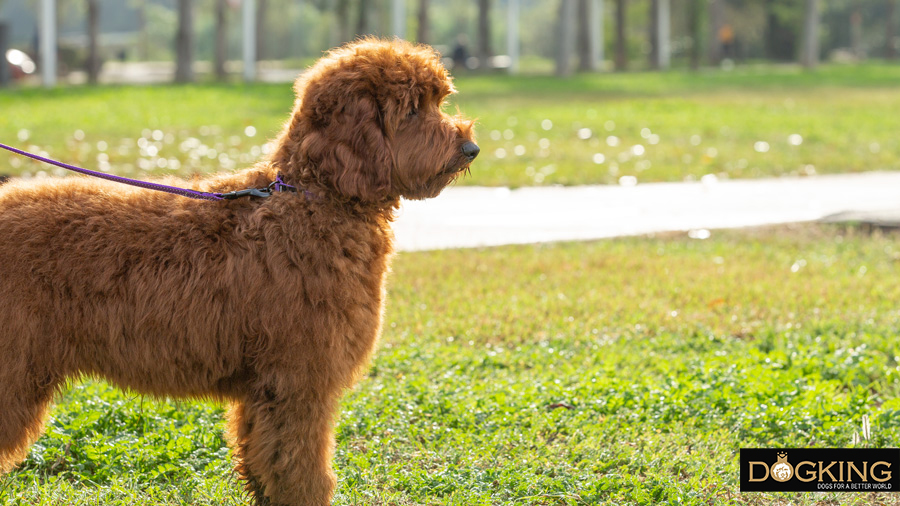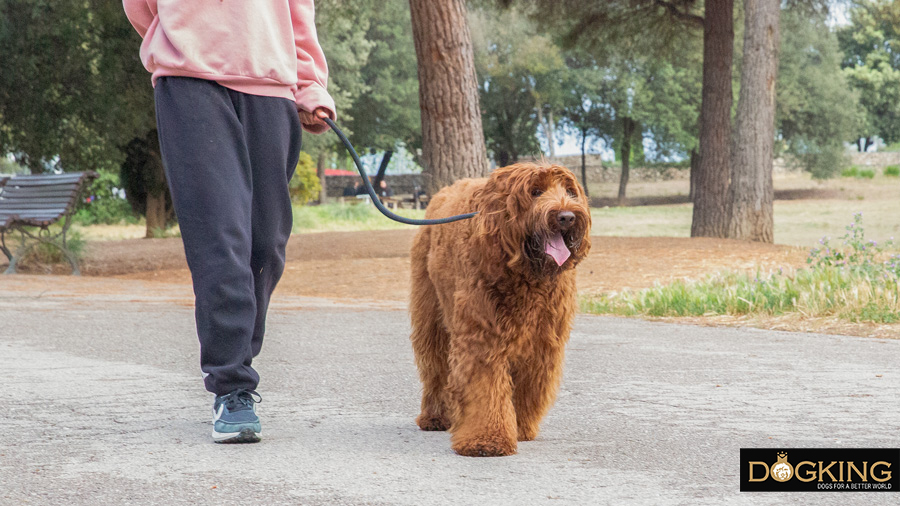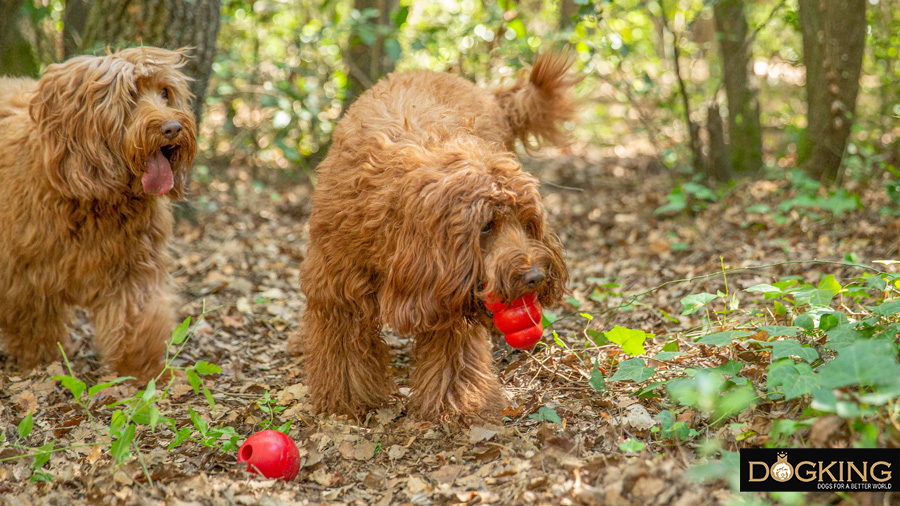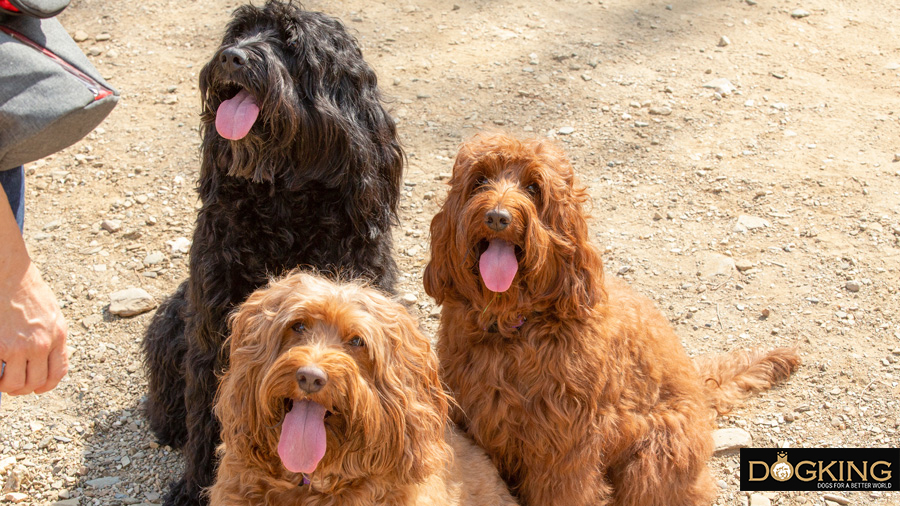Quanto spesso dovresti portare a spasso il tuo cane?
Camminare è un'attività vitale per la salute fisica e mentale del tuo cane.

L'IMPORTANZA DELLA CAMMINATA
Tempo di lettura approssimativo : 9 minuti
Camminare è un'attività vitale per il tuo animale domestico. La frequenza con cui dovresti uscire varia a seconda della razza, della taglia, delle caratteristiche, dello stato di salute e dell'età del cane. Nel caso dei cuccioli le uscite sono più numerose, poiché non hanno il controllo degli sfinteri e hanno bisogno di socializzare. Nei cani adulti il numero di passeggiate giornaliere non deve essere inferiore a 3, distribuite nell'arco della giornata.

Indice del contenuto
1- Come sapere quanto ha bisogno il tuo cane per fare una passeggiata?
2- Perché le passeggiate sono così importanti per il tuo cane?
3- Come dovrebbero essere le passeggiate con il tuo cane?
4- Che conseguenze ha la mancata uscita a spasso per il tuo cane?
5- Quante volte devo portare a spasso il mio cucciolo?
Come sapere quanto ho bisogno il tuo cane per fare una passeggiata?
Così come ogni persona è diversa, anche ogni cane è diverso. A seconda dell'età, della razza o della taglia, il tuo animale domestico avrà esigenze diverse quando si tratterà di fare una passeggiata. Ad esempio, le razze più piccole, con le gambe più corte, tendono a preferire passeggiate più brevi, mentre le razze più grandi come il pastore tedesco o il levriero potrebbero richiedere tempi più lunghi per poter bruciare più energie. Alcuni cani saranno più attivi ed energici, mentre altri saranno più calmi e più casalinghi. Tutti questi aspetti influenzano non solo il numero di uscite giornaliere necessarie, ma anche la loro durata. Esiste tuttavia un minimo essenziale al di sotto del quale non dovremmo scendere, almeno non su base regolare.
Un cane adulto sano dovrebbe fare una passeggiata almeno tre volte al giorno, preferibilmente tra mattina, mezzogiorno e sera. L'ideale è che, in totale, stia fuori per circa 2 ore al giorno, ma varia molto a seconda della razza e dell'individuo. Come abbiamo detto prima, bisogna alternare passeggiate più brevi in cui il cane fa i suoi bisogni e un giretto corto, con passeggiate più lunghe in cui vi è un maggiore dispendio energetico (con giochi, socializzazione, annusare, corse e più stimoli).

La cosa più importante in questo senso è osservare il tuo animale domestico. Ti darà i segnali necessari per scoprire se gli bastano le passeggiate che gli fai o, al contrario, ha bisogno di più esercizio e stimoli.
Se il tuo cane non riposa bene, appare nervoso, irrequieto e mostra cambiamenti comportamentali come abbaia o morde, potresti dover fare più uscite con lui.
Per quanto riguarda l'orario della giornata, l'ideale sarebbe far coincidere l'alimentazione e le passeggiate in una fascia oraria simile, poiché dopo aver mangiato, soprattutto se si tratta di un cucciolo, probabilmente sarà questo il momento in cui il vostro animale dovrà fare i suoi bisogni.
Perché le passeggiate sono così importanti per il tuo cane?
Oltre a fare i suoi bisogni, è importante che tu capisca perché queste uscite sono così estremamente necessarie per lui. Camminando, il tuo cane fa esercizio, stimola la sua mente, scopre il suo ambiente e socializza con altri cani e persone. Tutti questi elementi sono fondamentali per la salute fisica e mentale del tuo cane. Anche se in casa abbiamo un giardino, il nostro cane ha bisogno di fare una passeggiata per tanti motivi benefici per lui, ecco perché ama così tanto questo momento della giornata.
- Socializzare: il cane è un animale sociale, gregario e affiliativo, quindi ha bisogno di interagire con altri coetanei, ma anche con le persone che incontra sul suo cammino. Se il tuo cane è più timido, queste passeggiate lo aiuteranno a gestire meglio la presenza di altri animali e di esseri umani.
- Annusare: Il tuo cane ha bisogno di sviluppare il più importante dei suoi sensi, l'olfatto, qualcosa di cui può godere intensamente durante una bella passeggiata.
- Esercizio: Allunga le gambe, fai una bella corsa, salta in aria... Quando cammina, il cane si sente libero e felice. Le passeggiate garantiscono al tuo animale domestico una buona forma fisica.
- Apprendimento: La passeggiata è un buon momento per un cane e il suo padrone per approfondire il legame tra loro e anche per insegnargli dei segnali che lo aiuteranno nella sua educazione, nell'uso del guinzaglio o, semplicemente, per camminarvi accanto con calma.
Come dovrebbero essere le passeggiate con il tuo cane?
Secondo gli esperti, quando si tratta di portare a spasso il proprio cane, la quantità è importante quanto la qualità, anzi, la qualità potrebbe essere ancora più importante. Portare a spasso il tuo cane non dovrebbe mai essere una formalità o qualcosa di così passivo come farlo sedere accanto a te mentre parli con un vicino o lasciarlo fare i bisogni sul solito albero vicino alla tua porta di casa.
Almeno una delle passeggiate che fai durante la giornata dovrebbe essere davvero arricchente per il tuo animale domestico. Abbastanza a lunga per lui, rilassato, lasciandolo annusare al suo ritmo e ovviamente senza mai tirare il guinzaglio. Ricorda che una delle cinque libertà riconosciute a livello mondiale in materia di benessere degli animali recita: l'animale deve essere in grado di esprimere il suo comportamento naturale della specie, quindi in effetti ogni cane dovrebbe godersi almeno una di queste passeggiate al giorno. Qualsiasi cane dovrebbe godersi un po' di tempo, anche minimo 15 minuti, senza guinzaglio, in cui possa correre liberamente in uno spazio sicuro per sé e per il resto degli animali e delle persone.

Per rendere le passeggiate interessanti per il tuo cane, assicurati di portarlo in luoghi diversi: un parco, un nuovo quartiere, la spiaggia, la foresta... Ma se il tuo cane ha paura, devi farlo progressivamente, combinando nuovi posti con luoghi familiari, finché non li raggiungi vai alla conquista di posti nuovi, cercando sempre di non forzare.
Se hai dei dubbi durante il processo, è sempre una buona idea avvalersi dell'aiuto professionale di un formatore.
Quali conseguenze ha la mancata passeggiata per il tuo cane?
Non andare a fare una passeggiata o non farlo abbastanza può causare numerosi problemi al tuo cane. Le conseguenze vanno da problemi fisici come obesità, intorpidimento o disturbi articolari, disfunzioni e deterioramento cognitivo, come disturbi comportamentali, come l'abbaiare, la distruzione in casa, lo stress, l'iperattività, l'aggressività e persino il disturbo ossessivo-compulsivo canino.
Quante volte devo portare a spasso il mio cucciolo?
Il caso dei cuccioli è speciale. Prima di tutto, ricorda che non dovresti mai uscire a fare una passeggiata se non hai le vaccinazioni necessarie. Se questo è il tuo caso, potresti portarlo in braccio in modo che possa adattarsi ai nuovi stimoli.
Una volta protetti, dovranno uscire dalle 5 alle 7 volte durante la giornata. Per quanto riguarda la durata, saranno passeggiate più brevi e ne aumenteremo gradualmente la durata. In questa fase il cucciolo impara a urinare e defecare per strada, ma entra anche in contatto per la prima volta con il mondo esterno. Socializzare i cuccioli è fondamentale affinché si sviluppino in modo sano ed equilibrato, abituandosi a tutti i tipi di stimoli, senza paure o cattive abitudini. Il periodo chiave della socializzazione avviene tra le settimane 2 e 14-16 della vita del nostro cucciolo, quindi è fondamentale soprattutto in questa fase garantire una buona socializzazione, adattandola ad ogni età, prevenendo così problemi comportamentali e di adattamento nella sua vita adulta fin dal lavoro sulle paure dei cani adulti è sempre più difficile.
Qualunque sia la situazione, la razza o l'età del tuo cane, ricorda che, come persona responsabile del suo benessere e della sua felicità, devi fornirgli stimoli ed esercizio sufficienti, e per questo le passeggiate sono essenziali. Quando si adotta un cucciolo dobbiamo essere consapevoli di tutte le responsabilità che ciò comporta, ma se anche così, a causa del tuo stile di vita non hai tempo per portare a spasso il tuo cane quanto necessario, puoi sempre contare su familiari fidati per farlo da te o anche dai dog sitter professionisti nella tua città.
Recuerda que para tu perro pasear es mucho más que hacer pipí: lo necesita para garantizar su salud física y mental, sentirse realizado y satisfecho, y disfrutar de una vida plena y feliz.
